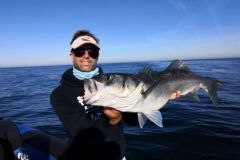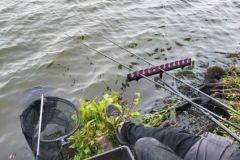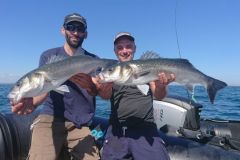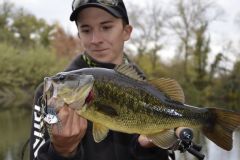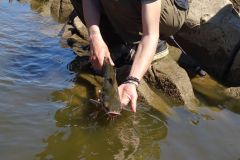Very active spearfishing
Contrary to popular belief, feeder fishing is far from being a waiting game. This technique demands a great deal of commitment from the angler, both in preparation and in the fishing action. From the initial baiting ‚euros generally five to six cages thrown with precision ‚euros, it's crucial to maintain a rhythm of recalls every 5 to 7 minutes to keep the fish active on the strike and guarantee the presence of particles on the bottom.
This regularity creates an attractive zone over the long term, keeping fish present and biting.
Positioning and installation: a well-thought-out workstation
The positioning of the angler is essential. In calm water, for a right-handed angler, the rod and bait tray should be placed on the left to facilitate feeder filling and striking. The station, stable and facing the water, ensures optimal posture during the session. The rod tip, slightly taut, should remain close to the surface to ensure rapid detection of bites.
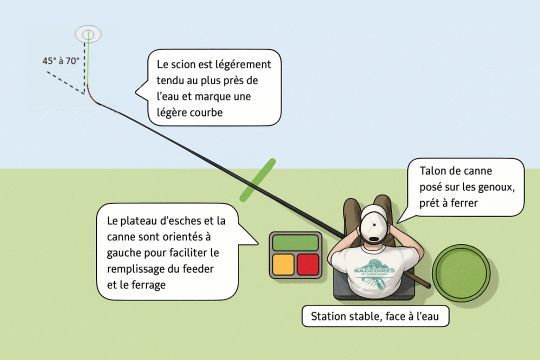
Throwing: a technical and repetitive gesture
The casting gesture follows a precise protocol. First, the line is held by the finger while the pick-up is opened. A backward swing loads the cast. Taking a visual cue from the opposite bank, the angler then propels the rig forward, releasing the line at just the right moment. The line is then gently tensioned up to the clip, and the feeder is precisely set.
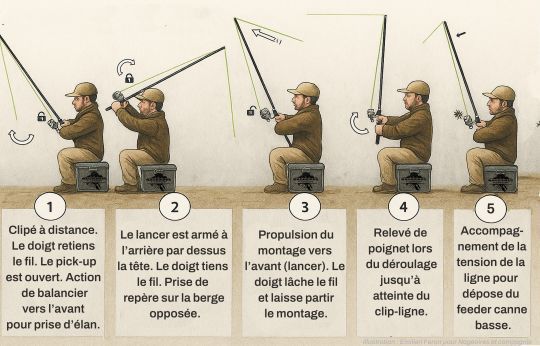
Leaders: adaptability and discretion
The choice of leader depends on fish behaviour and target species. In general, a 60 to 80 cm fluorocarbon is a good base. In case of discrete or absent bites, adjust the length: shorter if the bait is nibbled without detection, longer if no bites occur.
Here are a few useful pointers:
- Roach: 10 to 12/100, 80 to 100 cm, hook 16 to 18
- Breams: 12 to 14/100, 80 to 120 cm, hook 14
- Carp: 16 to 20/100, 20 to 50 cm, strong hook nį10 to 12
Scion and equipment: precision and power
The tip of the rod must be chosen with care. It must be sensitive enough to detect the sometimes very fine bites, while offering the necessary power to withstand currents and the weight of feeders.
Examples of suitable choices:
- Roach: 0.5 to 1 oz scion
- Breams: 1 to 2 oz scion
- Carp: 1.5 to 2 oz scion (or even 2 to 3 oz depending on conditions)
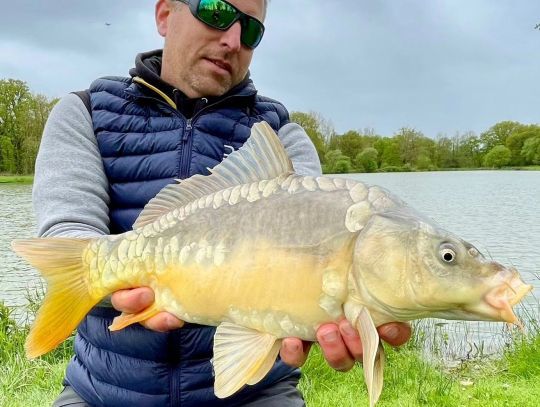
On the rod side, a 2.70 m to 3.90 m spinning model with a power output of 10 to 60 g is recommended. For versatile medium-range fishing, a 2.70 m to 3 m rod combo with a size 4000 reel is ideal.
Assembly: the classic flat assembly
The classic flat-mount is often used The flat-mount is one of the most popular feeder most commonly used. There are several reasons for this: it's easy to cast, it's primarily aimed at beautiful fish (bream, tench, barbel...) and it doesn't get tangled up when cast.
If used without a self-tightening float stop, it will also have the advantage of meeting the competition criteria feeder International (FIPSED regulation), which requires a sliding assembly.
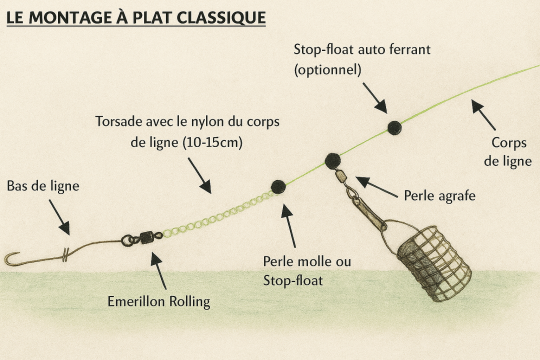
The twist, a solid classic
The classic flat lay technique involves twisting. This technique produces a taut, strong line. The twist is made by rotating the wire, then securing it with a simple knot. The resulting loop measures over a centimetre.

Primers: the right choice for any environment
In calm water, all types of groundbaits are suitable, provided they are well moistened. In rivers or fast-flowing waters, stickier groundbaits are preferable, as they are more resistant to currents. Commercial groundbaits specifically designed for feeder fishing are perfectly suitable, provided they are properly moistened.

 /
/ 



